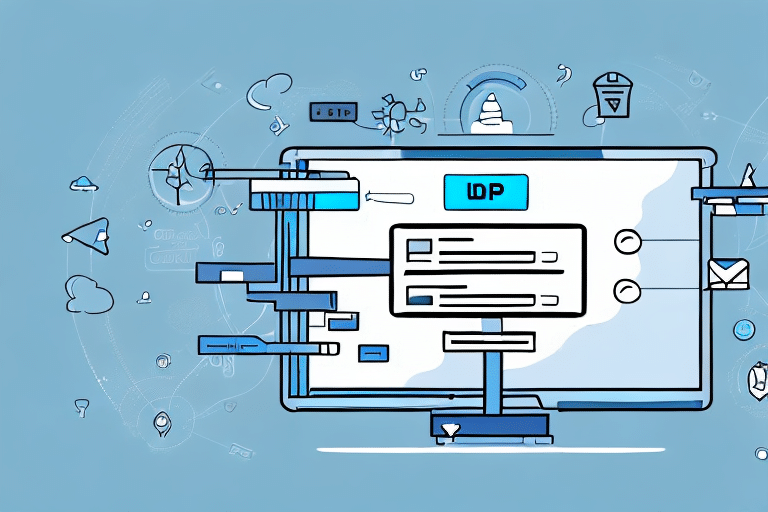Transferring Databases Securely with FedEx Ship Manager
Transferring databases involves meticulous planning and execution to ensure data integrity and security. Selecting the right shipping service is paramount in safeguarding your sensitive information. FedEx Ship Manager offers a robust solution for businesses needing to transport their databases domestically or internationally with confidence. This guide delves into the comprehensive process of handling database transfers using FedEx Ship Manager, providing you with the necessary insights and best practices for a seamless experience.
Why Choose FedEx Ship Manager for Database Transfer?
FedEx Ship Manager stands out as a premier choice for database transfers due to its unwavering commitment to reliability and security. The platform offers a range of services tailored to meet diverse business needs, ensuring that your critical data reaches its destination safely and on time.
- Reputation for Reliability: FedEx is a globally recognized leader in shipping, known for its dependable service and timely deliveries.
- Advanced Security Measures: FedEx implements stringent security protocols, including data encryption and secure handling procedures, to protect your information during transit.
- Flexible Shipping Options: From overnight delivery to standard shipping, FedEx Ship Manager provides various service levels to suit your specific requirements.
- Global Reach: With coverage in over 220 countries and territories, FedEx ensures that your databases can be transferred to virtually any location worldwide.
According to the International Shipping Journal, FedEx consistently ranks high in customer satisfaction due to its efficient logistics and robust tracking systems.
Preparing Your Database for Transfer
Proper preparation is essential to ensure a successful database transfer. Follow these steps to ready your data for shipping:
Create Comprehensive Backups
Before initiating any transfer, generate complete backups of your databases. This practice safeguards against potential data loss and allows for quick recovery if issues arise during transit.
Verify File Integrity
Use checksum tools to verify the integrity of your files. Ensuring that your data remains uncorrupted during transfer is crucial for maintaining its usability upon arrival.
Establish Secure Access Permissions
Confirm that the recipient has the necessary credentials to access and utilize the database. Implementing proper access controls prevents unauthorized retrieval and usage of your data.
Ensure Legal and Regulatory Compliance
Be aware of any legal or regulatory requirements related to the transfer of sensitive information, such as GDPR for personal data in the European Union. Compliance ensures that your transfer adheres to international standards and avoids potential legal complications.
Shipping Process with FedEx Ship Manager
FedEx Ship Manager streamlines the shipping process, offering tools and features that enhance the efficiency and security of your database transfer.
Creating a Shipping Label
Generating a shipping label is the first step in the shipping process. Here's how to do it:
- Log In to Your Account: Access your FedEx Ship Manager account using your credentials.
- Enter Shipping Details: Provide the sender and recipient addresses, select the service level, and specify any special instructions.
- Input Package Information: Enter the weight and dimensions of your database package to calculate shipping costs.
- Choose Payment Method: Select your preferred payment option and complete the transaction.
- Print and Attach Label: Print the generated shipping label and securely attach it to your package.
FedEx Ship Manager also allows you to schedule pickups and manage shipping addresses for future transfers, enhancing convenience and efficiency.
Packaging Your Database Safely
Proper packaging is critical to protect your database during transit. Follow these guidelines to ensure your data remains secure:
- Select a Sturdy Box: Use a high-quality, durable box that can withstand handling and transportation stresses.
- Use Protective Padding: Incorporate packing materials such as air-filled plastic bubbles, packing peanuts, or foam sheets to cushion the database.
- Secure the Database: Place the hard drive or storage device in an anti-static bag, then center it within the box using bubble wrap.
- Fill Empty Spaces: Use additional packing materials to prevent movement within the box, reducing the risk of damage.
- Label Appropriately: Clearly mark the package as "Fragile" and indicate the correct orientation to ensure careful handling.
For added protection, consider using tamper-evident seals and reinforcing the box with strong tape, as recommended by Packaging Strategies.
Choosing the Right Shipping Speed and Service
Selecting the appropriate shipping speed and service level is essential based on your transfer needs:
- Overnight Shipping: Ideal for urgent transfers that require next-day delivery.
- Two-Day Shipping: Suitable for transfers where swift delivery is important but not immediate.
- Ground Shipping: Cost-effective option for heavier packages or non-urgent transfers.
- International Shipping: FedEx offers specialized services for cross-border transfers, including customs clearance and compliance.
Consider the trade-off between cost and delivery speed to choose the service that best aligns with your requirements. Refer to FedEx's service options for detailed information.
Tracking Your Shipment
FedEx Ship Manager provides robust tracking capabilities to monitor your shipment in real-time:
- Online Tracking: Access the FedEx tracking portal to view the current status and location of your package.
- Notifications: Set up email or SMS alerts to receive updates on your shipment's progress.
- Delivery Confirmation: Obtain proof of delivery to ensure that your database has reached its intended recipient.
According to FedEx, their tracking system updates within hours of each scan, providing accurate and timely information about your shipment's whereabouts.
Receiving and Unpacking Your Database
Upon successful delivery, proper handling is crucial to maintain data integrity:
Inspect the Package
Immediately examine the package for any signs of damage or tampering. If any issues are detected, report them to FedEx promptly to initiate a claim.
Unpack Carefully
Open the package in a controlled environment to prevent static discharge or physical damage to the storage device. Use appropriate tools and follow safety protocols during the unpacking process.
Verify Data Integrity
After unpacking, verify the integrity of the database by running checksum comparisons or integrity tests. Ensure that all data has been accurately transferred without corruption.
Create a New Backup
Establish a fresh backup of the received database to ensure ongoing data safety and facilitate future recovery if needed.
Troubleshooting Common Issues During Transfer
Despite careful planning, issues may arise during the transfer process. Here are common problems and their solutions:
- Shipping Delays: Delays can occur due to unforeseen circumstances like weather conditions or logistical challenges. Utilize FedEx's tracking tools to stay informed and contact customer service for assistance.
- Lost or Damaged Shipments: In the event of loss or damage, immediately file a claim with FedEx. Ensure you have proper documentation and proof of the shipment’s condition.
- Data Corruption: If data corruption is suspected, verify file integrity using checksums and restore from backups if necessary.
For comprehensive support, reach out to [FedEx Customer Service](https://www.fedex.com/en-us/customer-support.html) to address and resolve any transfer-related issues efficiently.
Best Practices for Successful Database Transfers
Adhering to best practices enhances the success rate of your database transfers:
- Regular Backups: Maintain regular backups to minimize data loss risk.
- Data Encryption: Encrypt sensitive data to protect it from unauthorized access during transit.
- Clear Labeling: Use precise labeling to communicate handling instructions and contents clearly.
- Secure Packaging: Invest in high-quality packaging materials to prevent physical damage.
- Compliance Adherence: Stay informed about and comply with relevant data protection regulations.
Expert Tips on Optimizing Database Transfer Efficiency
Enhancing the efficiency of your database transfers can lead to cost savings and reduced downtime:
- Compress Data: Reduce file sizes by compressing databases to lower shipping costs and expedite transit times.
- Streamline Database Structures: Simplify database architectures to facilitate quicker handling and transfer.
- Leverage FedEx's Electronic Solutions: Utilize FedEx Ship Manager's digital tools for faster processing and management.
- Prioritize Transfers: Assign priority to time-sensitive transfers to ensure they receive expedited handling.
Implementing these strategies can lead to more efficient and reliable database transfers, minimizing operational disruptions.
Cost Analysis and Comparison with Other Transfer Services
Evaluating the cost-effectiveness of FedEx Ship Manager compared to alternative services is crucial for informed decision-making:
Cost Factors to Consider
- Shipping Speed: Faster delivery options typically incur higher costs.
- Package Weight and Dimensions: Heavier and larger packages cost more to ship.
- Insurance and Security Features: Enhanced security measures may add to the overall cost.
Comparison with Competitors
When compared to other shipping services like UPS and DHL, FedEx Ship Manager often offers competitive pricing coupled with superior tracking and security features. According to a [recent industry report](https://www.statista.com/statistics/219795/leading-shipping-companies-worldwide/), FedEx maintains a strong market position due to its comprehensive service offerings and reliability.
Businesses should conduct a thorough cost-benefit analysis, considering both direct and indirect costs, to determine the most suitable shipping service for their database transfer needs.
Conclusion and Next Steps
Transferring databases is a critical operation that demands careful consideration of security, reliability, and efficiency. FedEx Ship Manager provides a robust framework for handling these transfers with confidence. By following the best practices and strategies outlined in this guide, you can ensure the safe and effective transportation of your critical data assets.
As you implement these practices, stay informed about the latest developments in data security and shipping technologies to continually enhance your transfer processes. Leveraging FedEx Ship Manager's advanced features will enable you to maintain the integrity and availability of your databases, supporting your business's operational continuity and growth.






















